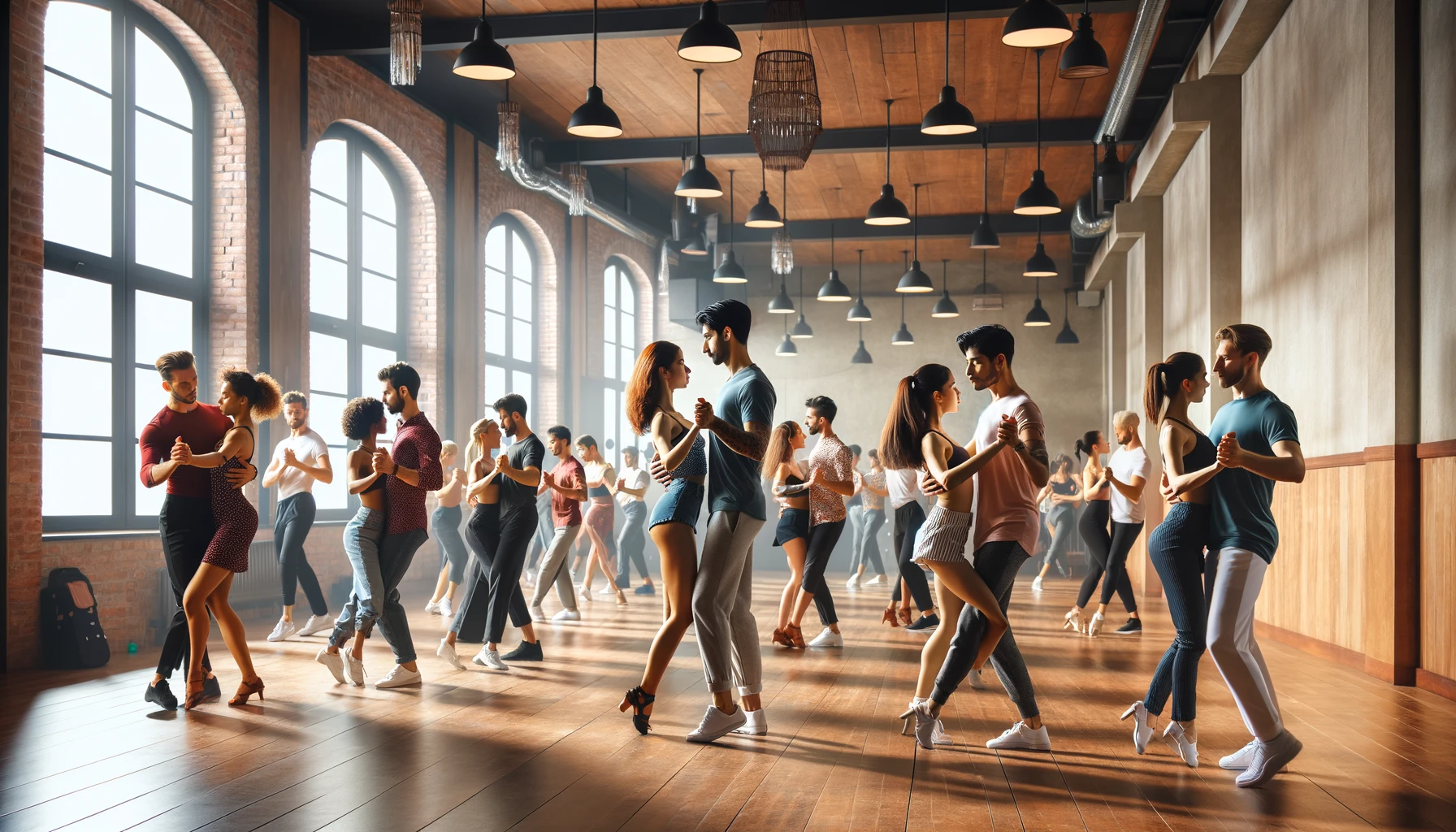When searching for a dance class, it’s worth thinking about what will work best for you.
Do you want flexibility or consistency? Do you want to focus on technique, or is it more important to find a fun group of friends? Read on to see what types of classes are out there, and decide what’s right for you.
Drop-in classes
At a drop-in class there is no commitment to dance at a regular day/time. Most classes will teach a routine or technique in isolation.
Although most teachers will have a regular timeslot, you may see variety in the teachers taking each class. You have a lot of flexibility to learn as and when your schedule allows, however this can have some downsides. Although there will be some regulars, you may not see the same students each week. As the students may change frequently, you may find it takes longer to build rapport with a teacher and for them to get to know you. However, dancing with more people will help your social dancing as you’ll learn to adapt to different leaders or followers.
Some drop-in classes also run a small social afterwards which allows you to practice what you just learnt.
Pre-Party Classes
As the name suggests, these are classes held just before a social. They’re entirely optional – you might want to arrive later if you just want to attend the party.
Just like drop-in classes, these just require you to turn up and pick your level. You’ll often get the chance to learn from a guest teacher, and sometimes you’ll find they’re an international star!
You’ll usually be taught a short routine (sometimes with a bit of solo footwork) and this can be a great way to learn a new move and put it straight into practice.
Classes before a party are a great way to meet the other dancers, and spot someone you might like to dance with later during the party. They can also be an opportunity to get a taster of a lesson from a teacher with whom you’d like to sign up to regular classes.
Progressive classes
Usually running for 6-8 weeks terms, progressive classes offer more structure than drop-in lessons and you’ll get more attention from the teachers. As the same students will take the classes it can be easier to get to know the other dancers in the class.
Learning with a group of students means you can get to know one another’s dance styles and more easily give each other feedback.
Unlike drop-in classes, progressive courses require you to commit to a regular timeslot and pay for a set of lessons up front. If you miss a class for some reason, you will unlikely get a refund (though some schools may give you a credit).
Private lessons
Private 1-1 lessons can be a great way to get lots of direct feedback and quickly improve your technique. You can talk to your tutor about what you want to work on, and they will plan a lesson around your requirements.
Lessons may be held in your home or a shared space like a gym if it’s available.
Private lessons can be expensive as your teacher’s time has a high value, but you should consider how much you will be able to benefit from direct feedback.
It would be a good idea to take a drop-in class with an instructor before booking a 1-1 lesson with them so you can be sure you like their style of teaching.
You can gain a huge amount from private lessons, but you’ll only get out as much as you put in. You should think about how you’re going to put what you learn into practice as you won’t have the opportunity to dance with others like you would at a drop-in or progressive class.

Leave a Reply